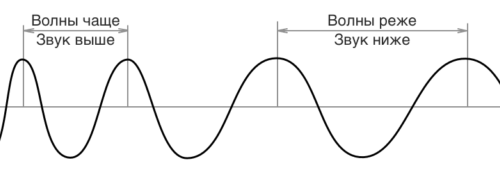How to sing correctly: another vocal lesson from Elizaveta Bokova
Contents
A singer who has not prepared his vocal cords for certain loads that arise during the performance of some complex fragments of a work, just like an athlete who has not warmed up, may get injured and lose the opportunity to continue his activities.
People who want to learn how to perform high-quality vocal works want to learn how to sing correctly in order to warm up their voice. A good help in this matter can be a video lesson by Elizaveta Bokova, during which she offers six singing exercises with gradual complication of voice parts, and also explains some of the nuances regarding proper singing breathing and sound production. The lessons are suitable for both experienced and beginning vocalists.
Watch the lesson now:
If you want to get even more useful and, most importantly, effective vocal exercises, then that way:
What does any chant have in common?
All exercises can be combined under one guiding principle. It consists in choosing a key for singing, the main tone of which corresponds to the lower limit of your vocal range, after which, starting from this sound, a singing part is performed, which is repeated each time a semitone higher, making an upward movement (until it reaches the upper limit ), and then down the chromatic scale.
Roughly speaking, the exercises are sung like this: we start from the bottom and repeat the same thing (the same tune) higher and higher, and then we go down again.
In addition, the content of each subsequent game requires higher performance techniques. And in order to achieve effectiveness when performing exercises preparing for singing, you need to take into account some factors that contribute to success, including:
- correct breathing;
- appropriate positioning of the singing apparatus, that is, those organs that are involved in sound production;
- a certain direction of the sound flow;
- strict adherence to the recommendations for each individual exercise.
Tips for proper breathing
One of the recommendations regarding how to chant correctly relates to the breathing mode, which is carried out only with the stomach. At the same time, it is important to ensure that the shoulders and chest do not move, and that there is no tension in the neck muscles. You should breathe very calmly, relaxed, almost unnoticeably to others, and pronounce vowels without thinking, getting rid of the sound as quickly as possible and not holding anything back.
Chorus one: sing with your mouth closed
In the first exercise, the author of the video lesson advises chanting with your mouth closed using the sound “hmm…”, increasing it by half a tone with each subsequent extraction, while it is important that the teeth are unclenched and the sound itself is directed to the lips.
Having thus sung a few notes, you can continue the exercise with your mouth open, using the sounds “mi”, “me”, “ma”, “mo”, “mu” in turn, and having reached the maximum heights, gradually return to the initial tone .
The next stage of this exercise is to play the sequence of sounds “ma-me-mi-mo-mu” in one breath, without changing the pitch, after which the order of the vowels changes and the part is performed in the sequence “mi-me-ma-mo-mu”.
Vocal axiom. When singing correctly, all sounds are directed to the same place, and the position of the speech organs during singing is somewhat reminiscent of the situation when there is a hot potato in the mouth.
Second chorus: let’s play on the lips
The second exercise, which is practiced for chanting by masters of the “bel canto” technique of virtuoso singing, is very useful for developing singing breathing and achieving the necessary direction of sound. It will also help ensure correct breathing, the evaluation criterion of which is the continuity of the sound of the voice.
The articulation used here is reminiscent of the way a small child imitates the sound of a car. Sound is produced through the mouth with closed but relaxed lips. In this exercise, the sounds are sung along a major triad, rising up and returning to the initial tone.
Chorus three and four: glissando
The third exercise is the same as the second, only the vocal part is performed using the glissando technique (sliding), that is, during playback, not three separate notes are sounded, but one, which smoothly rises to the top tone, and then, without interruption, returns to the starting position .
The fourth exercise, also performed using the glissando technique, is better to start with the notes “E” or “D” of the second octave. Its essence is to sing through the nose, preventing air from leaving the throat. In this case, the mouth should be open, but the sound is still directed to the nose. Each phrase includes three sounds, which, starting from the top, only go down a tone from each other.
Fifth chant: vyeni, vyini, vyani???
The fifth exercise will help you understand even better how to sing correctly and effectively, and will also prepare your breathing for performing long phrases. The game consists of reproducing the Italian word “vieni” (that is, “where”), but with different vowels and sounds like: “vieni”, “vieni”, “viani”.
This sequence of vowels is constructed depending on the difficulty of achieving sonority in their reproduction. Each element of the exercise is built on five sounds of the major scale and begins to be performed from the eighth tone, moving down, and its rhythmic pattern is much more complex than in previous exercises. The playback takes the form “vie-vie-vie-ee-ee-nee”, where the first three syllables are played on one note, and the remaining sounds are lowered along the steps of the scale mentioned above, with the vowels “…uh-uh…” performed in a legato manner.
When performing this part, it is important to sing all three phrases in one breath and open your mouth so that the sound spreads in a vertical plane, and you can check the correct articulation by pressing your index fingers on your cheeks while extracting the sound. If the jaws are sufficiently apart, then the fingers will fall freely between them.
Chant six – staccato
The sixth exercise is performed using staccato technique, that is, abrupt notes. This gives the impression that the sound is shooting into the head, which is somewhat reminiscent of laughter. For the exercise, the syllable “le” is used, which, when played, takes the form of a sequence of abrupt sounds “Le-o-o-o-o…” performed in paired fifth steps with a gradual decrease in semitones. At the same time, to avoid underestimation of sounds, it is important to imagine that the movement is going up.
Of course, to learn how to sing properly, it may not be enough to just read about how to sing correctly, but the information above, combined with the material presented in the video, can enrich your practice and help you achieve impressive results.



